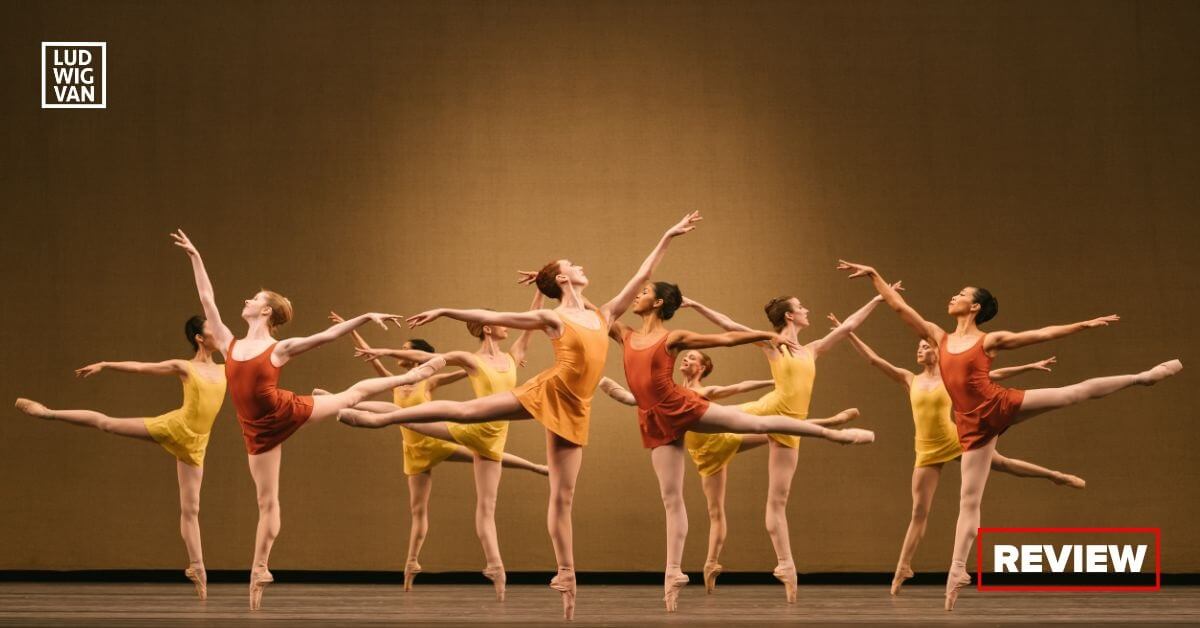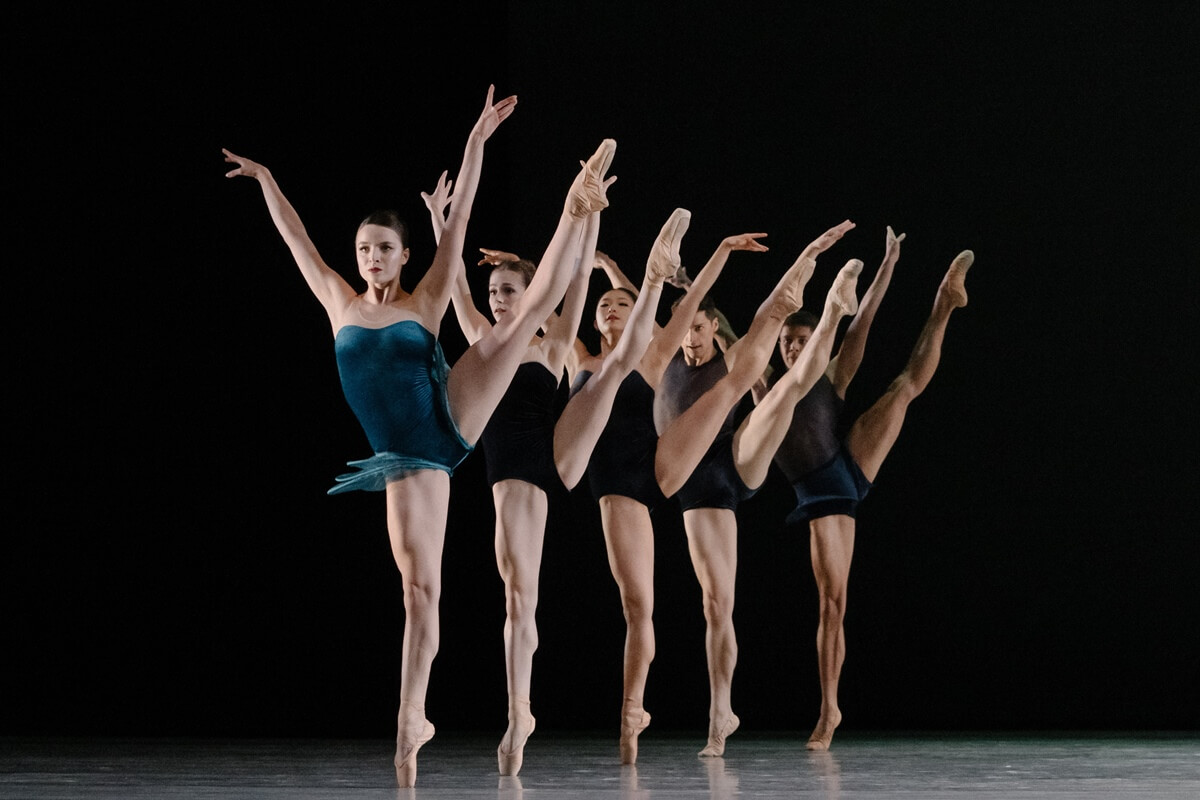
The National Ballet of Canada/Fall Mixed Program, The Collective Agreement by Alonzo King, Concerto by Kenneth MacMillan, Crepuscular by Vanesa G.R. Montoya, Four Seasons Centre, Nov. 9 to 13. Tickets here.
The National Ballet’s fall mixed program is new artistic director Hope Muir’s first Four Seasons Centre foray into presentation, and it points to what the future might hold. The general takeaway is that Muir likes choreography that makes serious demands on the dancers.
The three works look both forward and back.
The big get is landing the Canadian premiere of Alonzo King’s complex The Collective Agreement (2018). Muir has also resurrected Kenneth MacMillan’s abstract, cheeky Concerto (1966), which the National hasn’t performed since 1990. In terms of the home team, the romantic and melancholy Crepuscular (2021) by Montreal-based Vanesa G.R. Montoya was introduced by the company at their Harbourfront summer season last year, and has now made it to the mainstage.
All the works require flat-out dancing, and the company is looking really good in their execution.
The much-honoured, San Francisco-based Alonzo King is a titan in the contemporary ballet world. The 70-year-old founded his Alonzo King LINES Ballet in 1982, and has since established his company as an international superstar. The on-point The Collective Agreement is the first King work to enter the National’s repertoire.
King is something of a philosopher/scientist of dance. He calls his works “thought structures”, and for him, movement arises out of the energy that exists in matter, and manifests itself as laws that oversee shape and direction. In terms of dance, the stage picture is a whirligig of complicated physicality in both body and movement.
His theme in The Collective Agreement is the idea of harmony within a community — of finding a “we” — symbolized by the measured, metaphorical duets of the lead couple (Jurgita Dronina and Harrison James). A second couple (Heather Ogden and Ben Rudisin) are not so united and represent the pathway to “oneness”.
The rest of the 16 dancers would appear to be the mass of citizens who seem prone to individualism, but are in search of harmony. Together they create a big city in motion. In one astonishing section, the entire cast is engaged in doing their own thing, with each individual movement profile being a virtuoso performance. If there ever was a piece that needed a second viewing (or more), it is this one.
The original symphonic score by jazz pianist Jason Moran is a compendium of bursts of staccato chords that speak of disharmony, yet there is an underlying calm throughline that plays beneath.
Visually, designer Jim Campbell has created a bank of lights that come and go while changing colour, mirroring a cityscape. The one thing I’m not sure of is Robert Rosenwasser’s very strange costumes for the women — gaudy bustier-cum-corsets, some with tail feathers.
Like I say, a repeat viewing is needed to come to grips with King’s choreographic vision, as well as the score, the décor, and the costumes. I’m not kidding when I say that The Collective Agreement is complex.
Considering that MacMillan’s Concerto was created in 1966, it has absolutely stood the test of time. It is the choreographer’s rendering into movement of Dmitri Shostakovich’s Piano Concerto No. 2, composed in 1957. The music is modern, but not dissonant. In fact, the first and third movements are jolly, perky and fun, while the melodic theme of the slow second movement is absolutely gorgeous.

MacMillan’s choreography has the dancers flying over the stage, propelled by a lead couple in the first section (Chelsy Meiss and Scott Mckenzie), and a lead ballerina (Jeannine Haller) in the third. A secondary group of three couples, and a large corps de ballet fill in the stage picture. The elegiac and stately second movement features a beautiful duet with lovely partnering (Svetlana Lunkina and Peng-Fei Jiang).
The fast, non-stop, rush of movement of the first and third, as well as the precision of part two’s duet, requires serious classical chops, with the corps having to maintain symmetry, a hard thing to do at such speed. Although Concerto is very modern in look and sensibility, only a classical ballet company can pull this piece off, and the National shines.
Which brings us to Montoya’s off-point Crepuscular — and I’ve always thought, what an ugly word for such a beautiful time of day — the romantic, haunted half-light of twilight. Designer Jeff Logue has provided appropriately moody lighting with splashes of muted colour on the backdrop.
This piece is interesting because the cast is mostly drawn from second soloists and the corps de ballet, and their collective performance shows enormous strength in the ranks. Only the lead dancer, Christopher Gerty, is a first soloist (and when will he ever be made a principal dancer because he deserves it.)
Crepuscular comprises a series of tortuous duets performed to achingly beautiful, mostly Chopin piano music. Gerty is like a lost soul. He begins in a duet with Jason Ferro, but that doesn’t hold him. What follows are three other duets (Isaac Wright and Tene Ward, Kota Sato and Brenna Flaherty, and Larkin Miller and Selene Guerrero-Trujillo) that impact him in various ways.
They briefly entice his interest, but then he withdraws into himself, with Ferro trying to engage with him periodically. Do we take it as reality, or is he dreaming, wishing, hoping? Gerty dances with a passionate intensity that is quite affecting. Overall, Montoya has given the dancers a physicality that is almost gymnastic in its demands. The partnering is absolutely convoluted.
There is a musical throughline to the evening, which, I wonder, was it intended or accidental? Both Crepuscular and Concerto have a solo pianist (Andrei Streliaev and Zhenya Vitort respectively). The Collective Agreement also has a piano in the orchestration. So did a piano play a part in the programming?
As usual, Maestro David Briskin leads the National Ballet Orchestra with great empathy over three very different scores, with Crepuscular requiring an additional solo violin (Aaron Schwebel) and cello (Maurizio Baccante). Both players are orchestra principals.
And a final comment. Muir has weathered her first major challenge. She did show us something of where her tastes were leading her at this summer’s Harbourfront show, but the mainstage Four Seasons Program is the Big Kahuna.
Muir has given us an old master, a current master and an emerging Canadian talent. In other words, she has covered the waterfront, so to speak, in putting together this eminently watchable program.
#LUDWIGVAN
Get the daily arts news straight to your inbox.
Sign up for the Ludwig van Daily — classical music and opera in five minutes or less HERE.
- INTERVIEW | Actor Diego Matamoros Takes On Icon Walt Disney In Soulpepper Production Of Hnath Play - April 16, 2024
- SCRUTINY | Opera In Concert Shine A Light On Verdi’s Seldom Heard La Battaglia Di Legnano - April 9, 2024
- SCRUTINY | Lepage & Côté’s Hamlet Dazzles With Dance And Stagecraft Without Saying Anything New - April 5, 2024



